Sally Murphy's Blog, page 24
April 19, 2020
Readalong Post #7: The Writing of Toppling
Welcome back to my Readalong. On Friday I shared the opening chapter of Toppling and the wonderful book trailer. Today I’d like to chat about why and how I wrote Toppling.
I talked last week about the writing of Pearl Verses the World and how it flowed as if Pearl was telling me her story. After I’d written Pearl and, amazingly, got word that Walker Books would publish it, my thoughts turned to what to write next. I’d found the verse novel form such a satisfying way to write, that I knew I wanted to write another one. But writing about Pearl had been emotionally draining, so I wondered if I could write something a little lighter.
I started with two things – a character and a hobby. I wanted to use a male main character to make sure I focused on using a different voice. I decided I wanted my boy to be one of those kids who isn’t sporty or super smart or super popular or super anything really. At the time my own kids were, among other things, spending time making up domino topples. We seemed to have acquired over the years several sets of dominoes and, although no one ever played the game, we had a lot of fun setting up domino topples. Maybe not quite as good as this world record topple:
So I had a kid who loved domino toppling, and that was about it. I didn’t know what the conflict was going to be, but as I ran through ideas, I decided that if Pearl Verses the World was about a girl who felt she didn’t have any friends, then this new character should have a group of friends. And, when I started writing and introducing those friends, I knew that this is where the conflict would come from. Because, very soon, it emerged that John’s best friend had a problem, which meant John had a problem too. In the book John claims that Dominic is his best friend ‘not just because his name sounds like domino’, but I have a confession to make: I chose the name because it sounded a bit like domino. And it is more than his name that is like John’s hobby – because poor Dom is in danger of toppling, metaphorically.
It was at about this point that I realised this story was not going to be lighter than Pearl Verses the World and, as I wrote and discovered that Dominic was very sick, I wondered whether this was a story I 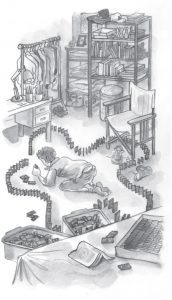 could handle. And I spent a lot of time worrying about the ending – both for the sake of my characters and for my young readers.
could handle. And I spent a lot of time worrying about the ending – both for the sake of my characters and for my young readers.
I won’t give a spoiler and tell you how it ends, but I can tell you that there is some hope in my ending, because this is how I believe stories should end. With hope. Not neatly wrapped up, but with some sign of good to come, at the very least. But I’ll also tell you that this ending has led to a lot of questions. I’ve had letters and emails, and kids in schools and festivals all over Australia ask me what happens next. And the answer is, I would only be sure of that if I wrote a sequel – which isn’t planned.
Back to the writing. I found the writing process perhaps less straightforward than for Pearl Verses the World, but, as with Pearl, I did feel that the main character, in this case John, was leading me through the story and sharing events with me. My job was to shape the words. When I didn’t know what would happen next I stopped writing for the day and, when I sat down the next day, I always knew what was next – although, as I’ve already said above – I did have a tousle over where and how to end it.
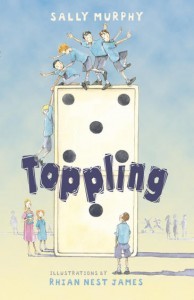 Eventually though I settled on the ending and, after rewriting and editing, off it went to Walker Books who, once more, said yes. And, a year after Pearl was published, Toppling was too. That was ten years ago. And what a ten years it has been!
Eventually though I settled on the ending and, after rewriting and editing, off it went to Walker Books who, once more, said yes. And, a year after Pearl was published, Toppling was too. That was ten years ago. And what a ten years it has been!
Do you have questions? I’d love to answer them. Comment below. Or post them on my social media – Twitter, Facebook or Instagram (#toppling or #readwithsally) , and I’ll answer them there. Thanks again for being part of my Readalong.
April 16, 2020
Readalong Post #6: Poetry Friday Introducing Toppling
It’s Poetry Friday and, for me, it marks the start of the second week of my Readalong , and time to introduce the second of my verse novels. First, though, thanks to everyone who took part in week one. From my lovely Poetry Friday friends who commented on last week’s post about Pearl Verses the World, to the many people who’ve commented on Instagram and Facebook and also to those just reading along on the sidelines. It is a joy to be in such good company every day, without leaving home. The post that drew the most reaction was the one comparing the two covers, which was discussed at length on Facebook, so it will be interesting to look later on this week at the THREE covers Toppling has had.
Speaking of Toppling, this week I’d love it, if you have a copy of Toppling to hand, if you would revisit it with me. But if you don’t have a copy, you can still join in and learn about the book. Toppling was released in Australia in 2010. Here’s the Aussie cover (I’ll show you the others later in the week, though you might catch a glimpse of the US cover in the book trailer below):

You’ll see that Toppling had a different illustrator from Pearl, the amazing Rhian Nest James, but the same cover design team at Walker Books.
If you haven’t yet read the book (or even if you have) you might enjoy this trailer, made by amazing Librarian Julie Hembree:
It’s a little more professional than the one I made for Pearl Verses the World!
And, if you’d like a taste of the book, here I am reading Chapter One:
And, for Poetry Friday, here is a poem from that reading:

If you have a copy of Toppling, I’d love if you would reread it with me this week. If you don’t own a copy, it’s available from libraries and bookstores in three editions:
The Australian version, published by Walker Books Australia.
The US version, published by Candlewick.
And the UK version (with a different title, John & Dom), published by Walker UK.
(Note that while these links do go to online bookstores, our brick and mortar stores are really struggling at the moment, so if you are going to buy a book, and have access to a local bookstore (lots are delivering!), I urge you to shop there.)
Over the next week, I’m going to share more about Toppling – why and how I wrote it, a glimpse at those three different covers, and more. You can join in: if you have a copy of the book, or a memory to share, I’d love to see a post on Instagram, Twitter or Facebook (#toppling), or a comment here or on my Facebook page.
Want more poetry? Of course you do! Molly has this week’s Poetry Friday roundup this week at Nix the Comfort Zone. Pop over there to see all the other poetry goodness shared around the world – and to admire Molly’s bread!
April 15, 2020
Readalong Post #5: 10 Things You Can Do With Pearl Verses the World
Welcome to the fifth post in my Readalong, and the final post focussing on Pearl Verses the World. 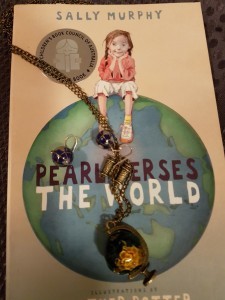 When I planned this Readalong, I planned to dedicate a post to classroom ideas. But then the Pandemic happened, and classrooms changed (for now, at least), and I also realised that there are already lots of great teacher notes available here and here and here.
When I planned this Readalong, I planned to dedicate a post to classroom ideas. But then the Pandemic happened, and classrooms changed (for now, at least), and I also realised that there are already lots of great teacher notes available here and here and here.
So,l I thought I’d instead give ten quick ideas for things you can do with Pearl – at home, with an online class, or in a classroom or library. So here goes: 10 things you can do with Pearl Verses the World.
Read it. Yes I know that’s stating the obvious, because it is a book, after all. But what I mean is JUST read it. No need to analyse, to come up with twenty comprehension questions, or fifty different worksheets. In a classroom, or library, or at home, sometimes (lots of the time! MOST of the time!) books should just be read and digested.
Gift it. Let someone else read it. Books make wonderful birthday, Easter, Christmas, Name Day, just because presents. And I know, because people have told me, that Pearl has been given to recipients of all ages.
Write a poem about your family. On page 33 Pearl describes her family:
Me
My Mum
And my Granny…
Who is in your family? What’s it like to be part of such a big family, or such a small family? Is there a metaphor for what your family is like?
Write a limerick. Pearl says she doesn’t like poems that rhyme, but when her teachers insists on poems, Pearl writes limericks. Here’s one:
There was a young lady called Pearl
Who was not a rhyming type girl
She said “I’ve no time
For poems that rhyme”
Which made her poor teacher go hurl.
You can write a limerick about yourself, your cat, your dog, an imaginary person – anyone! There’s some great tips on how to write a limerick here.
Design a new cover for Pearl Verses the World. Have a look at the two covers it has had – the Australian one and the UK one (you can see them here). Which parts of each do you like? Now imagine YOU are the cover designer – what image would you use? What font? Any other details?
Now imagine there is going to be a sequel – Pearl Verses the Universe. What cover would THAT book have? What would happen to Pearl? Write that story, or part of it.
Write a review. A book review is a reader’s opinion of a book. You can see some examples of reviews of Pearl here and here and here and a quick guide to writing a review here. Write your own review of the book and share it with someone who hasn’t read the book yet.
In the book we only hear Pearl’s voice. So, although we meet other characters, we don’t really know what they are thinking. Write a poem, from the point of view of Mitchell Mason, or Prudence Jones, or Miss Bruff.
There are some wonderful illustrations in Pearl Verses the World, but not every page has a picture. Find a page with no illustration and reread it, then draw the picture you think could go with that page.
Ask the author a question about the book! Whether you have read the book, are going to read the book, or even if you don’t think you ever will, I’d love to hear your questions. And if you post them here on my blog (in the comments) or on my Facebook author page here, I will answer them.
Thanks again for joining in on this Readalong. Tomorrow starts week 2, and I’ll be sharing a reading from Toppling. See you then.
April 13, 2020
Readalong Post #4: Pearl’s Prizes
Welcome back to Readalong with Sally. I’m having lots of fun sharing Pearl Verses the World with readers old and new, and I hope you’re enjoying it too. Thanks to all who have posted on previous posts and on social media. My post about the covers got lots of responses over on my Facebook page as well as Instagram. It seems the Australian cover was unanimously the favourite.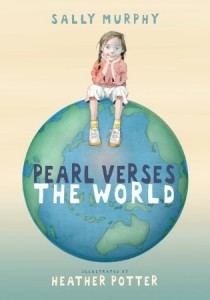
Today I’d like to talk about the reception the book had when it was published. It wasn’t my first book, but the response from readers, reviewers, schools and booksellers was unlike anything I’d experienced with my earlier books. I may have commented (more than once) that it took 20 years to become an overnight success story – but gosh it was fun, and still is.
One thing that happened that was really unexpected was that Pearl hadn’t long been out when it started being shortlisted for, and even winning, awards. First was the children’s category of the Indie Award, 2009. Later it was an Honour Book in the 2010 CBCA Awards, Best Book of the Year for Upper Primary in the Speech Pathology Awards, Winner of the Young Readers Category of the Family Therapy Award, and was shortlisted for both the Queensland Premier’s Literary Awards and the WA Premier’s Literary Awards. It was an amazing year. So much love for my little book. My book was an award winning book! And I was an award winning author.
Awards mean a lot because they let an author know that their book has been judged by a group of experts, against some strong criteria, as being worthy of a trophy, or a certificate, sometimes a cheque, and often a sticker for the front cover. They can boost sales figures, because librarians, teachers and parents will often purchase based on awards. And they say to publishers that they have done a wise thing investigating their time and money into that author, that book.
So, yes, I have enjoyed the awards. But the ones that have meant the most have perhaps gathered the least publicity.
In 2010 Pearl won both the Hoffman Award, in the West Australian Young Readers’ Book Awards (WABYRA)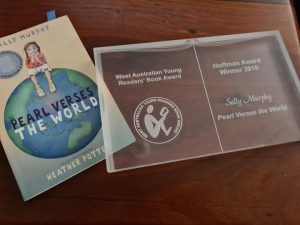 and the Children’s Book Council Junior Judges Children’s Choice Award.
and the Children’s Book Council Junior Judges Children’s Choice Award.
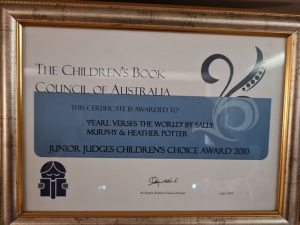
What was so special about these awards? Easy! These awards were won because young readers – the people I write for – read and voted for Pearl. When the target audience likes your book enough to vote for it against some pretty stiff competition, you know you’re doing something right.
Awards aside, though, stickers and trophies and certificates and votes mean a lot. But over the eleven years since Pearl was published there have been hundreds of moments when I’ve realised that my book has been read and loved: chatting to a young reader at a festival or school visit; seeing a girl hugging a copy of Pearl she’d just bought; emails and letters from readers; stories from parents & grandparents about connections made. Every one of those moments feels like an award of its own.
Do you have a story of a child (or an adult!) reading Pearl Verses the World? I’d love to hear it here or on Facebook.
Thanks for dropping by.
April 12, 2020
Readalong Post #3: Covering Covers
Welcome back to my Readalong. Today I’m thinking about covers. There’s an old saying ‘you can’t judge a book by its cover’. But while I agree with the spirit of that adage, those who work in publishing and bookselling probably know that good covers do make books sell, while, shall I say, less good covers can harm a book’s chances. Because, rightly or wrongly, buyers, and borrowers too, do judge books on their first appearances, choosing which books to pick up and browse, often based on what they look like.
So, to the cover of Pearl Verses the World:
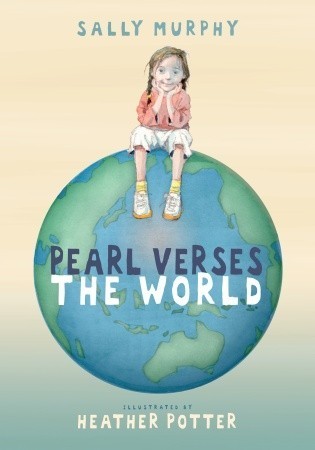
I loved it the first time I saw it, and have loved it ever since. I love that Heather Potter brought the character of Pearl to life with such a deft, tender touch, and perching her on the world was genius. I also love the font choice, and the colour palette too. Heather’s illustrations and the design team at Walker Books Australia together creating something that I think is pretty special. I feel like it’s okay to be a bit biased about my own book, because I had absolutely nothing to do with this brilliant design.
However, when Pearl was published in the UK, the team at Walker UK felt that the cover was not quite right for their market. Not only that, they didn’t like my title, which they felt was a bit too ‘clever’ with its play on words. So, they shortened the title, used a different illustration and muted the colours down to very subtle stripes:
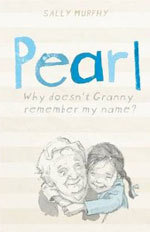
And what did I think? Apart from feeling sad about the title change, I loved this cover too. I think the tag line and the illustration gave a strong sense of the book’s essence.
Over in the United States, however, Candlewick Press seemed to prefer the original title and cover – their change was to produce it as a hardcover book, which was pretty special.
Back to my point about judging books by covers. If I can judge the covers by how many of each version sold, then it would seem the original cover was the best one. But that ignores the fact that in my home country my publisher and I were able to promote more directly and more widely and, when it was shortlisted or won a variety of awards (more about those in another post), that also boosted sales.
For me, I prefer the original cover because it was the first I saw, and it’s the one that settled in my heart, but I like the others too – and if someone is reading my book and spending time with Pearl, then any of the covers has done its job.
Which do you like?
April 11, 2020
Readalong Post #2: The Writing of Pearl Verses the World
Welcome to Day 2 of my readalong. Thanks to everyone who has dropped in on my first post, and left comments here or on social media. As I continue to reflect on Pearl Verses the World, today I thought I might chat a bit about how (and why!) I wrote the book and why I chose to write a verse novel. However, this post comes with a spoiler alert: if you haven’t read the book, and plan to read it, you might want to stop reading now and come back to this post after you have.
I must admit that I didn’t so much choose the verse novel form as it chose me. Long before I met Pearl, I started a review site called Aussiereviews, and started reviewing Australian books. In 2002 I opened a novel from my review pile – and was surprised to see it was written in verse. I had never heard the term verse novel, let alone seen one, but as I started to read that book (Margaret Wild’s Jinx), I fell in love with the form. I knew that I would like to write like that and, as I started to find and read other verse novels, I knew that one day I would try to write one of my own. But I thought that first I would learn HOW to write a verse novel – a book, or a course, or something to guide me through the process. That didn’t happen.
Instead, Pearl Verses the World came like a bolt from the blue, insisting it be written, and be written in verse. One night as I got into into bed, a few lines of poetry came into my head, and I had to get up, find a piece of paper, and write them down. Each time I tried to turn the light off and get some rest, a few more lines came to me, and I had to jump out of bed and write them down. I still own that piece of paper and those early lines.
Finally, my beloved started to get restless with all the late-night poetry making, and I had to give it a rest. That poem, though, didn’t let me rest, and over the coming days I drafted more poems – until I realised that there was a story being told and that the voice, who was Pearl, was not going to leave me be until I wrote her tale.
Pearl’s story was easy to write in many ways. It was almost as if Pearl was channeling through me – she told me her tale, and whenever I felt that I didn’t know what was going to happen next, I stopped writing and waited for it to come to me. And come to me it did; often when I was in the shower, or lying in bed, or doing something totally removed from writing. I gradually worked out why Pearl was sad, and why she felt lonely. She was watching her beloved grandmother fade away, and her grief had forced her apart from her classmates.
Having said that, Pearl’s story was in other ways terribly hard to write. When I wrote the scenes dealing with Granny’s death I experienced grief. A grief so real that I had to stop writing, curl into a ball and howl. Even long into the editing process I still cried. I also had to consider whether the book was too sad for child readers. Did I want children to cry as I had cried? The eventual answer was yes, I did need to share this story with children. They may cry when they read it – but hopefully they will also smile and even, perhaps, laugh out loud. Above all, I hope they will see that although they may experience loss or grief in their lives, life does go on and there is always hope. I also hope they will know it is okay to grieve, in their own way and in their own time. I have blogged before about sad books and why I write them here and here.
The other thing that happened when I wrote was that although I cried, I also smiled, And laughed. And, when I’d finished writing, I realised I was done crying. It was quite a cathartic process – one that I hope is echoed for readers, who, once they finish the book, should also be done crying.
Back to the writing process. I said earlier that I thought I would learn to write verse novels before I tried to write one. Instead, I kind of just winged it. I just wrote the story, in verse, as it came to me. But, looking back, those other verse novels I’d read, and my many years of writing poetry, stood me in good stead. It’s advice I give to anyone who asks me about being a writer: writers need to read. A lot. That reading builds an understanding of how story, and different writing forms, work, in ways that writing courses can’t on their own (of course writing courses, books on writing and so on are amazing too!).
So I wrote a verse novel, not really knowing what I was doing – and it worked. Amazingly, a year later, Pearl Verses the World was published by Walker Books, with amazing illustrations by Heather Potter, and the rest, as they say, is history.
DO you have questions? I’d love to answer them. Comment below. Or post them on my social media – Twitter, Facebook or Instagram (#pearlvworld or #readwithsally) , and I’ll answer them there. Thanks again for being part of my Readalong.
April 9, 2020
Poetry Friday: My Readalong Begins
It’s Poetry Friday, which is always exciting, but today I am especially excited because today also marks 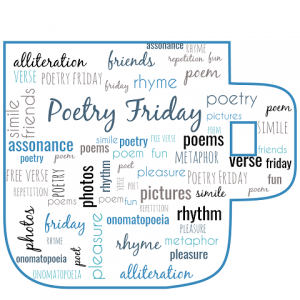 the beginning of my Readalong. Welcome! I am so glad you dropped by.
the beginning of my Readalong. Welcome! I am so glad you dropped by.
What’s a Readalong, I hear you ask? A readalong is where you are invited to read a book (or, in this case books) along with others doing the same. My readalong is running for four weeks, and each week I will be inviting you to read one of my verse novels. But don’t worry if you don’t have a copy of your own – you can dip your reading toes in to the extracts I’ll be sharing, and get a taste. If you DO have a copy, I would love you to grab it off your shelf, read, or reread, and participate by asking questions, posting comments, or sharing your reactions on social media using the hashtag #readwithsally, or the individual hashtags for each of the four books. This post here gives more details and, as you’ll see, the purpose of all this is to spread some verse novel love AND celebrate the release of my brand new verse novel, Worse Things, on May 1.
So, to start at the beginning, this first week, I’d love it if you would read along with my first verse novel, Pearl Verses the World, which was released waaaay back in 2009. Here is the cover, which still takes my breath away:

Heather Potter, the illustrator, rendered Pearl, and her world, so beautifully, and the team from Walker Books crafted the most amazing cover design.
If you haven’t yet read the book, here is the booktrailer that I made way back then (incidentally, this was my first ever attempt at a trailer).
And, if you’d like to hear an extract, here I am reading the opening pages:
Lastly, because it’s Poetry Friday, here’s one of the poems:

If you already have a copy of Pearl Verses the World, I would love if you would pick it up this week and revisit it. If you don’t own a copy, it is available in three editions:
The Australian version, published by Walker Books.
The US version, published by Candlewick Books
And the UK version (with a shorter title, just Pearl), published by Walker UK.
(Note that while these links do go to online bookstores, our brick and mortar stores are really struggling at the moment, so if you are going to buy a book, and have access to a local bookstore (lots are delivering!), I urge you to shop there.)
In the next few days I am going to post more about Pearl Verses the World – why and how I wrote it, some of the lovely moments that have come from interacting with readers, and more. You can join in: if you have a copy of the book, or a memory to share, I’d love to see a post on Instagram, Twitter or Facebook (#pearlvworld), or a comment here or on my Facebook page.
Thanks for reading this far and for joining in in whatever small way you can. And don’t forget there is, as very Friday, lots of other poetry goodness happening all over the web. You can see the Poetry Friday roundup at The Poetry Farm, hosted by Amy.
April 2, 2020
Poetry Friday: Beach Walks and Happy Toes
It’s Poetry Friday and today I am counting my blessings. In these topsy-turvy troubling times, I am feeling lucky that I have a job that allows me to work from home. I am feeling lucky that I have a family who I love and that all of us have roofs over our heads, even when we might be separated. I feel lucky to have a house full of books, good internet connection, food in the fridge and pantry, and so much more. And I feel very very lucky to live where I do, and that this means my daily exercise is on (to me) the most beautiful beach in the world.
Like so many other people I am staying home unless essential, but because I live so close to the beach and because it is never crowded, I am still able to walk on the beach every morning, keeping well more than the required distance from other people (do be assured that this is done within the law, and in fact I am more cautious about any contact with people or surfaces than has been mandated).
Aware that there are so many people who can’t do this, I have been sharing a one minute video of the beach every day, on my Instagram account, using the hashtag #oneminute . I’ve also started adding a selection to Youtube , for anyone who doesn’t have Instagram. The idea is that anyone who needs a minute of waves, water, sunshine, sand, can watch, and breathe with me.
So, for example, you can watch the sunset over the Indian Ocean, and imagine you are there with me – or, if you’d prefer, alone:
I’ve been looking for different angles and, one day, I thought I would try filming my toes. In my head it was a little more artistic than it turned out, but I was able to giggle at myself:
It was only later, after I’d uploaded and shared that I remembered I had done something similar in a less stressful time a few years ago – in fact, back in 2016, when I photographed my toes and wrote an accompanying poem. I had happy toes then, and, when I’m on that beach, I have happy toes now. Here’s that video and poem – I hope your toes can soak up some of that happy today.
Happy Toes
This morning I have happy toes
They’re wriggling in the sand
They’ve carried me here ocean-side
To where the sea meets land
This morning I have happy toes
They’re dancing on the beach
They’re gathering secrets from below
And whispering each to each
This morning I have happy toes
They’re tingling in the waves
They’re laughing at the silly way
The morning sea behaves
This morning I have happy toes
They’ll head home feeling great
But tomorrow they’ll be back here
For another beach play date!
Copyright Sally Murphy 2016
The Poetry Friday Roundup today is at My Juicy Universe, where Heidi is inviting us to all #ShelterInPoems . Catching up on loads of poetry goodness seems a wonderful way to spend a Friday, so check it out. Stay safe, breathe deep.

PS
It seems an age since I decided to have a Read Along (see this post) to celebrate the upcoming release of Worse Things. When I scheduled it, I did not imagine the lockdowns that would be happening around the world. The Read Along is still happening, though – I think we need books more than ever – and I hope you’ll join me, starting next Friday, to read with me.
March 9, 2020
Read Along With Me – Coming Soon!
Have you ever been super excited about something? Counting down the days or the sleeps until a birthday, or Christmas, or a special holiday? If you have then you’ll understand what I’m feeling at the moment, as I count down the days (and the sleeps) until my new book Worse Things comes out on May 1.
Let’s pause for a moment and gaze admiringly at the amazing cover, created by illustrator Sarah Davis and the amazing team at Walker Books Australia.
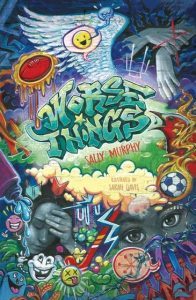
Worse Things is my fourth verse novel, and so as I thought about fun ways to prepare for, and celebrate, its release, I wondered if I could also somehow celebrate the first three. See, it’s been 11 years since the  first one, Pearl Verses the World was released, 10 years since Toppling and six years since Roses are Blue. So you might not have even been alive when the first one was published and, if you were and you have read it, it might have been quite some time ago.
first one, Pearl Verses the World was released, 10 years since Toppling and six years since Roses are Blue. So you might not have even been alive when the first one was published and, if you were and you have read it, it might have been quite some time ago.
So, here’s my plan. In the weeks leading up to Worse Things’ release, I’m going to have a read-along of the other three – one each week. What’s a read-along I hear you ask? It’s when lots of people (well, I’m crossing my fingers there’ll be lots) read the same book at the same time and talk about it.
 How will we talk about it? I’ll be posting each day here on my blog, and answering questions here; I’ll also be running a Facebook live each week on my author page and again you can drop in and ask questions – live. But that’s driven by me. I’m also asking you to talk about the book – through chatting on my social media or, in any other way, including your own Instagram, other social media, or blog. I’ll share more ideas in the lead up.
How will we talk about it? I’ll be posting each day here on my blog, and answering questions here; I’ll also be running a Facebook live each week on my author page and again you can drop in and ask questions – live. But that’s driven by me. I’m also asking you to talk about the book – through chatting on my social media or, in any other way, including your own Instagram, other social media, or blog. I’ll share more ideas in the lead up.
So, how can you get involved?
Grab a copy of one or more of the books. You might already own a copy, and, if you’re in Australia, there’s a good chance your school library of local library will have a copy. If you’d like to buy copies, pop into your local bookshop, or they are available online. American readers, if you’d prefer there are US editions of Pearl Verses the World and Toppling, and UK readers, although the titles are different, Pearl and John and Dom are the same books inside.
Follow my page on Facebook. This is not my personal page where I post what I had for breakfast,
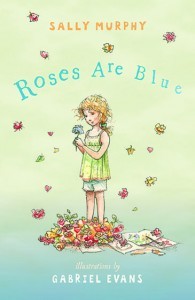 but my author page where I share stuff about my books, my writing, and other reading related stuff. You can also follow me on Instagram or on Twitter.
but my author page where I share stuff about my books, my writing, and other reading related stuff. You can also follow me on Instagram or on Twitter.If you are a teacher with a class who reads one of my books during this time, I have a few slots available for Skype sessions and, in Perth, a few slots for class visits, to chat directly about one of the books. Contact me to discuss.
If you have a blog or podcast and would like to chat about one of the books, or run some other cool related thing, again, let me know.
Get ready to hashtag. The hashtag for the whole event will be #readwithsally. To talk about one specific book, you can also use these: Pearl Verses the World #pearlvworld, Toppling #toppling , Roses are Blue #blueroses and Worse Things #worsethings.
If all of this is too much, I’d love if you’d just cheer me (and my books) on from the sidelines, even if quietly. Launching a new book is exciting but it’s also a tiny bit terrifying, so every little bit of goodwill helps!
Thanks for reading this far and thanks in advance for celebrating with me and whatever way you can. Drop back soon to see what else I have planned. In the meantime, I’d love you to comment and tell me about a time when you were counting down the days till something exciting.
March 5, 2020
Poetry Friday: Everywhere Stairs
It’s Poetry Friday, and I’ve been thinking about stairs. Why? Because I seem to keep stopping at the bottom of them of late. My recent treks have seen me pondering (and climbing) these stairs
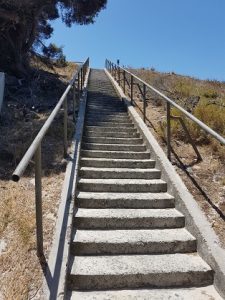
on Rottnest Island, a place less known for its stairs than for its gorgeous beaches and, of course, quokkas. But the stairs form part of its military history and thus I climbed them as part of a tour.
Closer to home, I often climb these stairs
 when I leave my beach – and often pause to snap them, even though I know it isn’t the first time, and won’t be the last. They are my favourite stairs because of their location, but I must confess to preferring going down than going up.
when I leave my beach – and often pause to snap them, even though I know it isn’t the first time, and won’t be the last. They are my favourite stairs because of their location, but I must confess to preferring going down than going up.
I also, recently, came across these stairs on my morning walk closer near the Swan River in Perth. From the bottom I called them rainbow stairs, but wondered whether someone had just spilt pain down them.
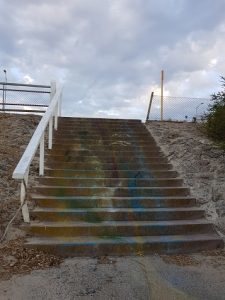
From the top, however, I could see some deliberateness, including the yellow heart at the bottom.
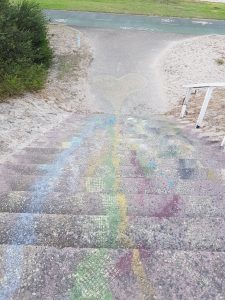
Lastly, at my dayjob I work on the fourth floor, and must confess that I take the lift far too often, but this week have challenged myself to climb the stairs at least once per day. It’s hard work, but I’m hoping it will get easier. Maybe when I love the stairs more there will be a photo, but for now, you’ll just have to take my word.
So, with all these stairs featuring in my thoughts, it seemed logical to attempt a poem about them. Here it is.
Everywhere Stairs
Stairs
They’re everywhere
Beckoning me up
Calling me down
Obstacle
Challenge
Or invitation
Depending on mood
Or location.
I do like stairs
But sometimes
When I’m halfway up
I wish I’d stayed down
Or just taken the lift.
(Poem copyright Sally Murphy, 2020)
Rebecca at Sloth Reads is hosting this week’s Poetry Friday roundup. So step over there, or step right up, and check out what other poetry goodness there is to see this week.



